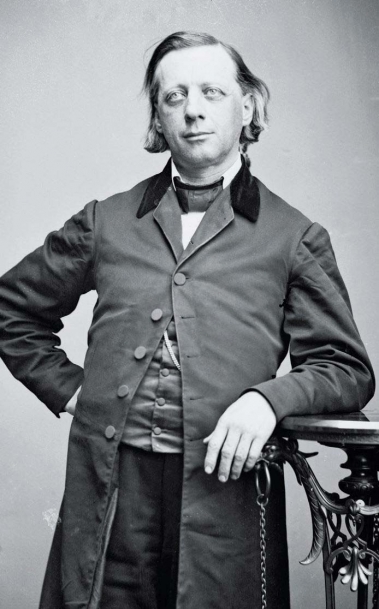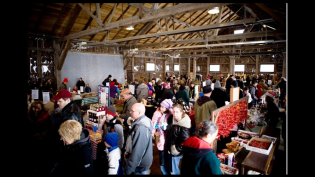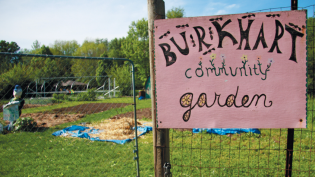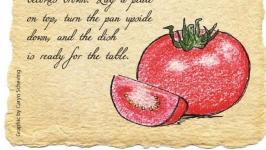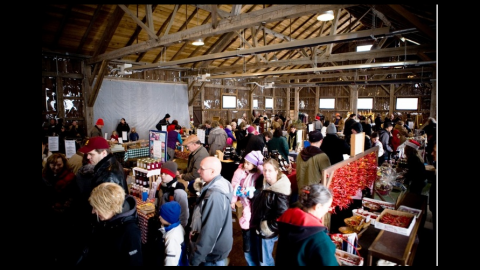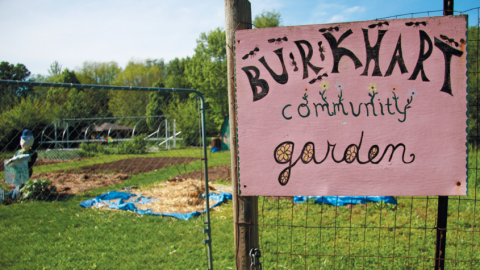Western Farmer and Gardener - From Insects to Electricity
As we celebrate Indiana’s bicentennial, let’s take a look back to when Indianapolis was the headquarters of its own agriculture and gardening publication, edited by a Presbyterian minister related to a soon-to-be-famous novelist.
Dial the WABAC machine to the 1840s, and we’ll find a city with one road, the National Road, free of tree stumps and the air thick with mosquitoes. Horses and horse-drawn wagons were the primary modes of transportation. It’s been barely 30 years since Indiana earned statehood, and about 25 years since the capital moved from Corydon in southern Indiana to the center of the state. Among those seeking their livelihood in Indianapolis was Henry Ward Beecher, the brother of Harriet Beecher Stowe, who would become famous in 1850 with the publication of her novel Uncle Tom’s Cabin.
Henry Beecher moved to Indianapolis May 13, 1839, from Lawrenceburg (spelled Lawrenceburgh in historical documents), to become pastor of Second Presbyterian Church, which was founded the year before.
“Residences are very fine, with large yards and gardens on sides and fronts,” Ward wrote in a letter about his visit to Indianapolis. He borrowed a book about horticulture from the State Library, and a second career was launched.
On a salary of $600 a year, Ward and his wife, Eunice, rented a house near downtown.
“The only really attractive feature of the tiny Beecher home on East Market Street was the large lot on which it stood,” wrote Jane Shaffer Elsmere in her 1973 biography, Henry Ward Beecher: The Indiana Years 1937–1847. “There were several fruit trees, rose bushes, shrubs, and space for a garden. Beecher deeply loved gardening, and it was believed by this family that he had inherited his feeling for it from his mother, who had spent much time working with her flowers prior to his birth.”\

In the spring of 1840, Beecher planted more rose bushes, starts of honeysuckle and a willow tree. On March 11, 1840, the day the Beechers buried their stillborn son, Henry planted onion sets and sowed seeds for cabbage and cauliflower. “He would be credited with growing the first cauliflower in Indianapolis,” Elsmere wrote. On following days, he sowed lettuces, radishes and peas. He even planted a few hyacinths and jonquils.
At the time, writers and editors published annual gardening and agriculture almanacs for specific states, such as Indiana, or regions like the Midwest. The publications included phases of the moon, records of temperatures and rainfall, recipes, bits of gossip, scientific information and patent news. The editors freely shared information among the publications.
Among the first for the Midwest region was The Western Farmer and Gardener’s Almanac for 1842, by Thomas Affleck, which was published in Cincinnati.
“The desire for information on farming and gardening has increased to a wonderful extent throughout the Union, during the last few years,” Affleck wrote. “With agriculture for the foundation of the superstructure, our country is safe.”
Beecher began editing The Indiana Western Farmer and Gardener’s Almanac in Indianapolis, with Volume I in 1845 and Volume II in 1846. Designed to be “a journal devoted to agriculture, horticulture, rural affairs and domestic economy,” the publications are filled with monthly reports from throughout Indiana, the Midwest and the Eastern United States. Included were instructions on what to plant when, advice on dealing with the insects and diseases that afflicted plants and livestock and questions from readers. Topics in July 1845 included: Slobbering in Horses, Potato Diseases and Mildew on Grapes.
“Many permit the fruit of the vines to perish before their eyes from the ravages of mildew, ignorant that an effectual remedy is within their reach. It is simply to dust the branches with flour of sulphur. It is best done while the dew is on.” (Page 212, Vol. I)
In July 1846, the almanac bemoaned a troubled apple crop, but praised a robust harvest of strawberries.
“Never do we remember such a promise of fruit, as early spring held out. From the extraordinary fullness of bloom, every one expected an immense quantity of fruit. These expectations have been much abated. In this part of the State and in the southern part, so far as we can learn, there will not be more than half a crop of apples. Peaches, in this region, will be abundant. Grapes generally appear well, and are swelling finely. Strawberries are abundant, and from the warmth and dryness of the weather for some weeks past, are very well ripened.” (Page 165, Vol. II)
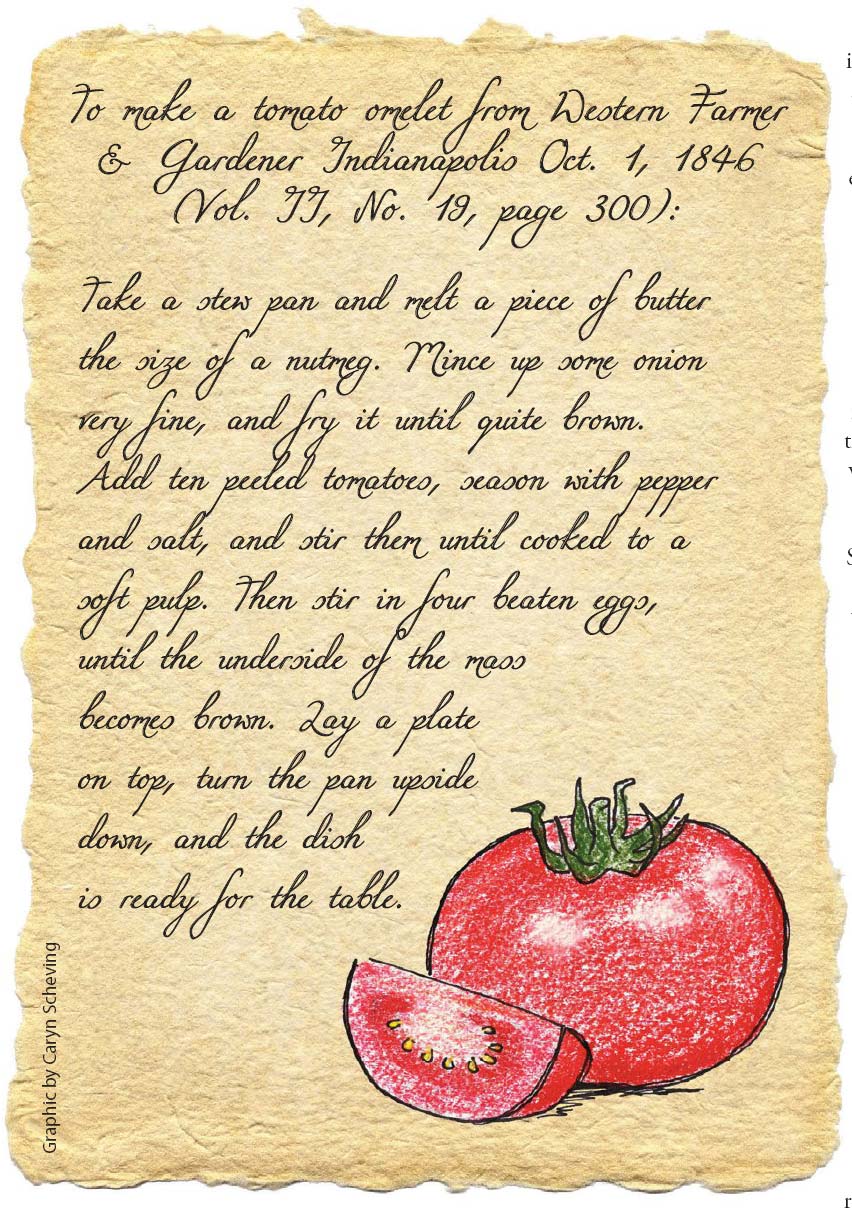
Farmers and gardeners of the period also grappled with new technology, from cultivators to electricity. In 1845, a reader asks about insect blight on pear trees that have been grafted on quince stock.
“The editor of the (Ohio) Farmer and Gardener, I think, leans somewhat to the belief of blight being produced from electricity...,” wrote S. Another reader wrote “that keeping the earth about the roots moist, by placing stones or litter, is beneficial, but we are not yet prepared to think it will prevent the evil, and what to say of the iron system we know not, it goes however to aid the electric theory.”
In response, Beecher wrote “Everybody is agog with electricity. But we respectfully suggest that it is one thing to ascertain facts by cautious, guarded experiments, or careful observations, and quite another, to set down everything which one does not know what else to do with, to electricity, simply because it may be so for aught that we know to the contrary. People reason somewhat in this wise: Electricity performs a vast number of very mysterious operations; therefore, every operation, which is mysterious is performed by electricity. We believe electricity to have something to do with it, only because it seems to have concern with every living, growing thing.” (Page 150, Vol. I)
Beecher resigned his post at Second Presbyterian on August 12, 1847, to become pastor at Plymouth Church in Boston. The Western Farmer and Gardener continued for a few more years, but eventually folded.
Vestiges of these publications continue today. The Old Farmer’s Almanac has been published continually since 1792. There’s also the Farmer’s Almanac, which has published annually since 1818, and the Mother Earth News Almanac, which has been revived after several years of dormancy.


